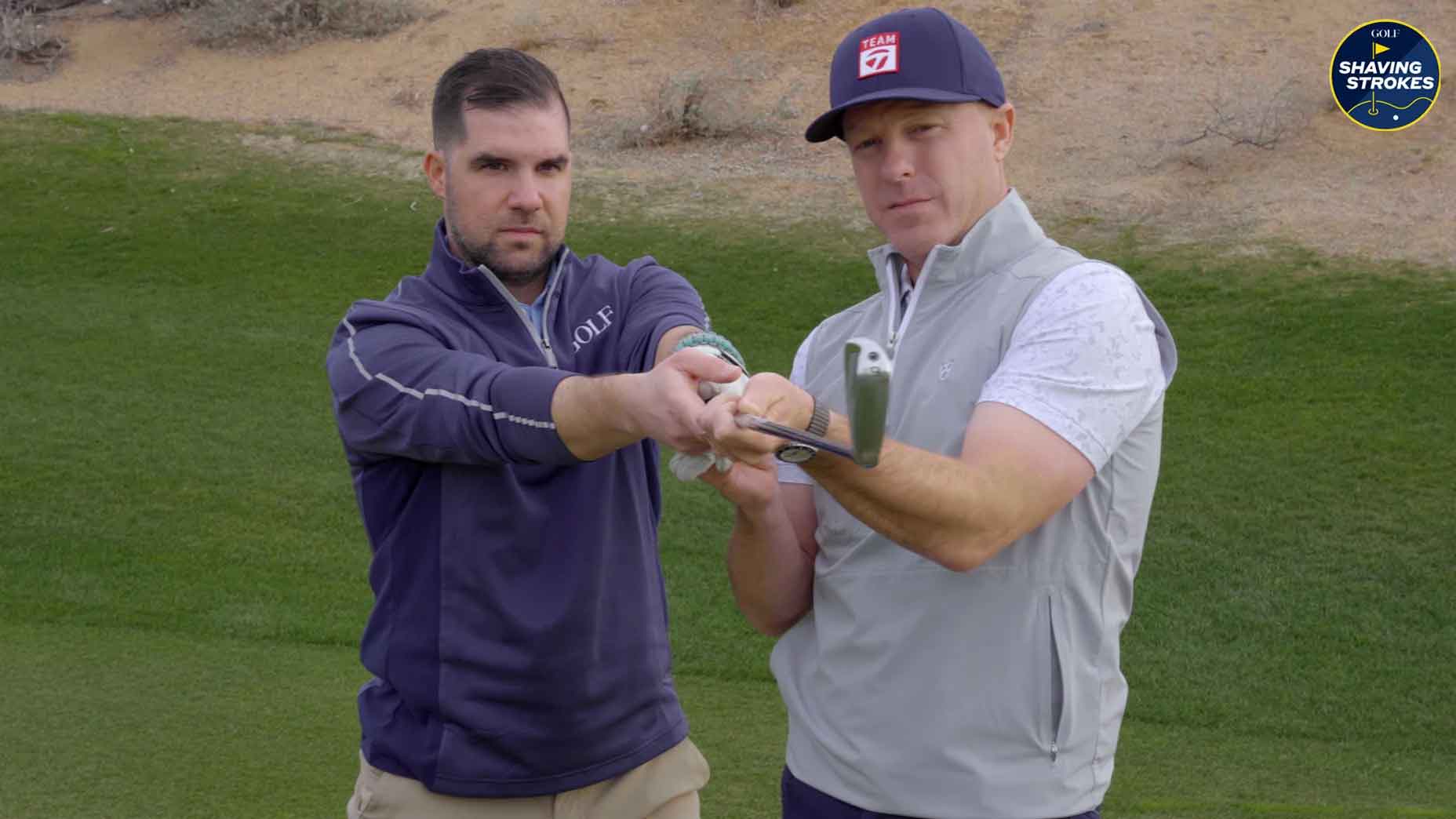If you’ve been putting in hours at the range and still don’t feel as though you’re seeing results on the golf course, your practice might be part of the problem.
Better players tend to have better practice habits, and often it’s quality, not quantity, that really makes the difference. I checked in with a few of GOLF’s Top 100 teachers to find out the practice secrets of their single-digit handicap clients. Learn to approach your next range session or round like them, and you may soon join their ranks.
1. Start with a good warm-up
“Low handicappers definitely warm up their body before their practice sessions,” says Debbie Doniger. “If time is a constraint, just focus on three areas: glutes, hips and upper thoracic (spine). A dynamic warm-up is key before hitting balls.”
Try Debbie’s super-quick warm-up below to prepare your body for your next practice session.
[bc_video video_id=”5622602617001″ account_id=”416418725″ player_id=”B1lrmWbebQ” embed=”in-page” padding_top=”56%” autoplay=”” min_width=”0px” max_width=”640px” width=”100%” height=”100%”]
2. Utilize all available technology
“The key to getting better is to constantly evaluate your game and turn weaknesses into strengths,” says Mike Adams. “The good players I work with use TrackMan and FlightScope data to check how they compare to tour players. The TrackMan Combine [a test designed to identify strengths and weaknesses in your game] can highlight areas where they need to work.”
3. Learn how to diversify your yardages
“Can you hit a mid-level wedge a variety of distances? If the answer is no, that has to be an area of focus,” says Jon Tattersall. “And when it comes to iron play, are your distances covered? If not, is this a fitting issue or technique? If you have access to a launch monitor, hit a number of shots with a lot of irons, then study the distances and shot pattern. The best caddies and players on tour know where to aim their shots given the typical shot pattern. Aiming a shot where the chances of success are slim usually doesn’t make for a good outcome. Match your tendencies to the shot you are facing.”
[bc_video video_id=”4822359265001″ account_id=”416418725″ player_id=”B1lrmWbebQ” embed=”in-page” padding_top=”56%” autoplay=”” min_width=”0px” max_width=”640px” width=”100%” height=”100%”]
4. Take dead aim on the range
“Better players almost always practice with alignment aids on the ground,” says Kellie Stenzel. “Their ability to know exactly where they are aiming so they can have proper feedback from the results of the ball as well as the ability to check that their set up is correct is built in to each and every practice session. Players with less experienced will often feel the alignment aids are in the way. I’ve seen more than one tossed aside.”
[bc_video video_id=”5388163270001″ account_id=”416418725″ player_id=”B1lrmWbebQ” embed=”in-page” padding_top=”56%” autoplay=”” min_width=”0px” max_width=”640px” width=”100%” height=”100%”]
5. Focus on your weaknesses
“Better players fix their faults, and enjoy the process of self improvement,” says Joe Plecker. “Making changes is tough work, and humbling. Most golfers like to practice their strengths and steer away from the discomfort or struggle of working on a fault. Better golfers love the challenge and are always looking for a way to eliminate errors in their games.”
Stenzel concurs. “By assessing their weakness and improving upon that, better players deal with their shortcomings, and that will help build confidence when they have to hit that shot type again.”
6. Two words: Short game
“Single-digits are likely to only hit 50% of their greens on a good day, so competency with the scoring clubs is vital to saving pars,” says Mark Blackburn. “I make my single-digits focus on distance wedges, shorts putts inside eight feet, and lag putts for speed. Good speed helps you avoid three-putts, and that, in turn, avoids bogeys and double bogeys.”
“From a drill perspective, I recommend speed ladders and three-footers around the hole, North-East-South-West. As for wedges, figure out how far your full and half wedge swings go, then play for those yardages when laying up on par 5s and pitching out of trouble.”
[bc_video video_id=”4822388319001″ account_id=”416418725″ player_id=”B1lrmWbebQ” embed=”in-page” padding_top=”56%” autoplay=”” min_width=”0px” max_width=”640px” width=”100%” height=”100%”]
7. Give purpose to your practice
“The best golfers I’ve found practice with efficiency,” Tattersall says. “The days of purely beating balls are behind them. Data drives so much of our world these days, and in golf it’s no different. We use data from launch monitors, data from past performance (stats) and from good old-fashioned experience. The most productive practice usually follows some reflection on what to work on so that the next time you’re standing on the first tee of a tournament, you feel prepared for what is about to come.”
8. Replicate “real round” situations
“Better players keep a routine in their practice that mirrors how they play,” says Plecker. “The quantity of practice (balls hit in a session) by a better golfer is less than an average player, and the quality of the pre-shot routine, analysis of the outcome, and pace of the swings is identical to that used in play.”
9. Stop aiming for the pin
“On approach shots, single digits tend to focus on hitting the middle of the green rather than firing at pins,” Blackburn says. “Employing this practice will minimize short-siding and maximize your scoring potential — especially since you’ve practiced that lag putting!”
IT’S TIME TO CHANGE YOUR AIM: A GOLF MAGAZINE STUDY
10. Invite pressure
11. Just get the ball in the fairway!
Tattersall agrees with the importance of the “off-the-tee” game. “Practice your driver, and better yet, get on a launch monitor to optimize your driver,” he says. “If you can’t figure out a solution, get help, it’s that important. When a new golf ball comes on the market, the spin change could affect your driver too. Don’t assume, make sure you check.”

12. Face your fears
[bc_video video_id=”5371330306001″ account_id=”416418725″ player_id=”B1lrmWbebQ” embed=”in-page” padding_top=”56%” autoplay=”” min_width=”0px” max_width=”640px” width=”100%” height=”100%”]
13. Challenge yourself
[bc_video video_id=”5983972087001″ account_id=”416418725″ player_id=”B1lrmWbebQ” embed=”in-page” padding_top=”56%” autoplay=”” min_width=”0px” max_width=”640px” width=”100%” height=”100%”]








